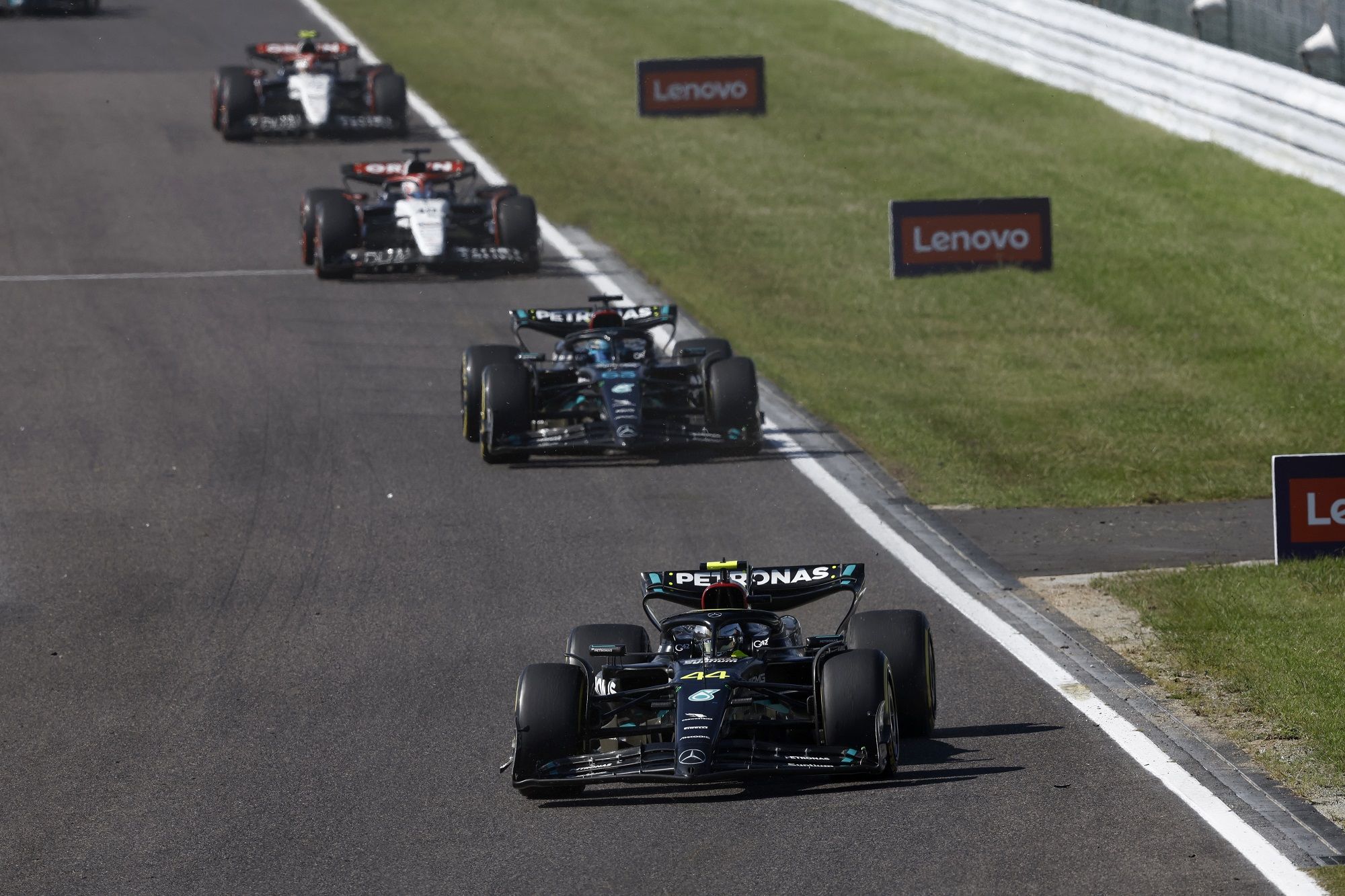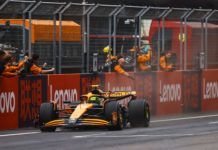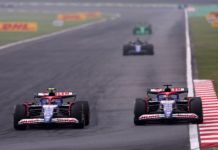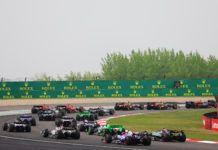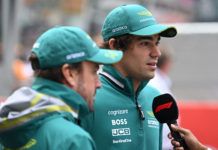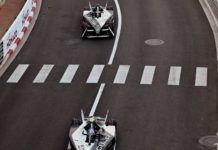Rosie Wait, Head of Race Strategy at Mercedes talks about the impact of Frederik Vesti’s input in F1 Japanese GP turnaround.
For Mercedes, the Japanese GP saw them take fifth and seventh places with Lewis Hamilton and George Russell respectively. Post-race, an interesting story to emerge from the weekend was the work undertaken in the simulator on Friday by junior driver Vesti.
It was Vesti on simulator duty and hehad to work through the data from Friday where Mercedes didn’t look that strong. Much like Mick Schumacher helping out at certain events, the work the Dane did for the team assisted Hamilton and Russell greatly eventually to beat at least one Ferrari and both Aston Martin cars.
“The simulator is a real crucial tool to help us develop and setup the car,” said Mercedes strategy head Wait. “Whilst the track is the ultimate location where we go racing, it’s got a lot of limitations. We don’t have much time during practice but even if we did, we don’t have enough tyres and track evolution and traffic conditions are always changing”.
“Unpicking the subtle effect of different set-up changes can be very difficult. That’s where the simulator really comes into its own. Once we have understood the limitations of the car in P1 and P2 then the guys back at the factory, together with the simulator drivers, can work through many different setup options in completely stable conditions”.
“Now obviously the simulator is not the track. We really rely on the simulator drivers to be able to translate and understand what’s going to work well when we get to the race track, and what’s more specific to the simulator. We are lucky to have two great simulator drivers in Mick and Fred, helping us with this work during races this year”.
“This race it was Fred’s turn. We had a very difficult car balance and poor performance on Friday. The work that Fred did with the simulator team is a real testament of that turnaround that we saw, particularly with Lewis going from a P14 in P2 up to being able to put it P7 on the grid. A huge part of that was due to the work that Fred and the simulator Team did,” she summed up.
So, the truth be known, simulator work does assist and improve on track and race performance but as Wait did advise, the track is the ultimate test and location. It really was a game and race of strategy. Hamilton got ahead of Carlos Sainz in one Ferrari but Russell was not so lucky and was passed with relative ease by the Spaniard.
Russell tried the one-stop strategy where he had nothing to lose and eventually sacrificed for Hamilton to finish ahead of Sainz. But Mercedes cautiously knew it wasn’t easy for both the cars to hold back Ferrari despite trying and pushing at the end.
“Ultimately, we will never know,” said Wait. “One of the beauties of sport is that you can never be sure what is going to happen. That’s why we love competing in it and people love watching it. Our real challenge that race, was trying to fight Ferrari. We were on the back foot having qualified behind, had a bad start and our pace was nip and tuck”.
“Realistically even if we could have gotten one car ahead of one Ferrari, that represented a good result for us. We already had that with Lewis having undercut Sainz, so we needed to be careful not to compromise the gains we had already made. In this situation it would be lovely if there was a pause button where you could take a time out, and we could just chat and discuss with the drivers”.
“We could have understood from George how the tyres are feeling and how likely it was to be able to maintain his pace as the race progressed. We could have spoken to both about the options for defending. Overtaking is difficult in Suzuka, but it is no Singapore. Whilst the vast majority of overtakes happen in the DRS zone into turn 1, there is still around 50 percent of overtakes that are just scattered around the rest of the track”.
“I am sure we could have worked together as a team to defend both of their positions into turn 1 but the question is: Would that have put us at risk in the rest of the circuit? Had Sainz been able to overtake Lewis, George would have been a sitting duck. Given what we saw with how easily Piastri and Leclerc were able to get through George, the writing was really on the wall for him, and it was overwhelmingly likely that whatever we tried to do he wasn’t going to be able to defend those positions”.
“Our focus therefore had to shift to making sure that we didn’t compromise the position that we had already gained to Sainz with Lewis. We did give it our best shot with the two cars, but ultimately this is not a circuit where that works, and George was always destined to finish in P7 unfortunately,” summed up the Mercedes personnel.
For Mercedes, it was a good if middling weekend and one full of ifs and buts. Might be why F1 is if backwards but the work undertaken by Vesti was surely a plus as they strive towards achieving their first win of the 2023 campaign with six grands prix to go.
Here’s Mercedes camp on team orders, strategy

